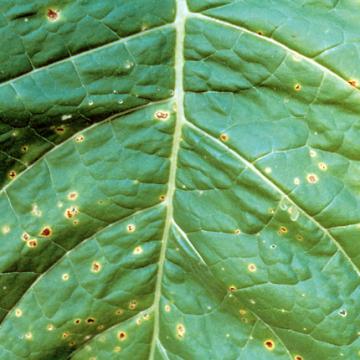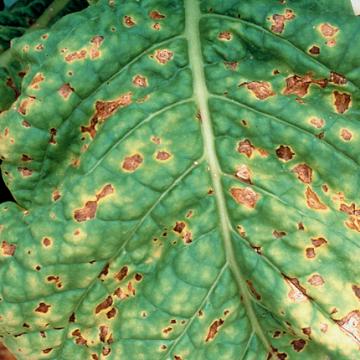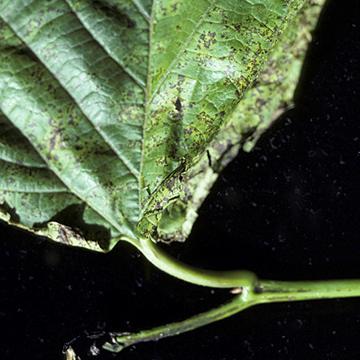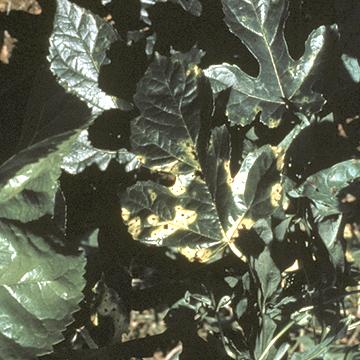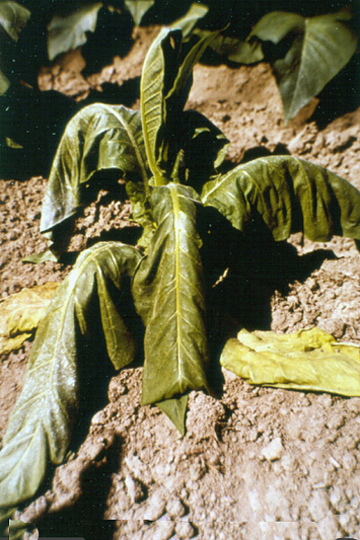DISEASE: Angular leaf spot
HOST: Tobacco
Leaf with light brown, angular spots. The difference between this disease and wildfire of tobacco is that wildfire is caused by a strain that produces tabtoxin. It causes conspicuous halos around lesions and large parts of a leaf may turn yellow .
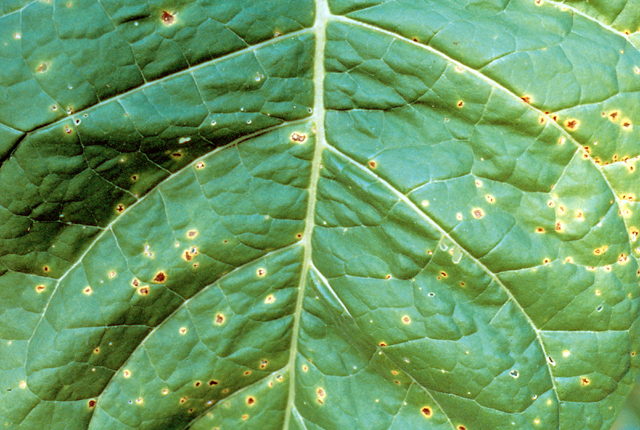
Angular leaf spot | Tobacco
DISEASE: Angular leaf spot
HOST: Tobacco (Nicotiana tabacum)
PATHOGEN: Pseudomonas syringae pv. tabaci
SOURCE: H. Shew
DISEASE: Angular leaf spot
HOST: Tobacco
Yellowing of adjacent tissues occur as spots age (midseason). It causes conspicuous halos around lesions. Large parts of a leaf may turn yellow.
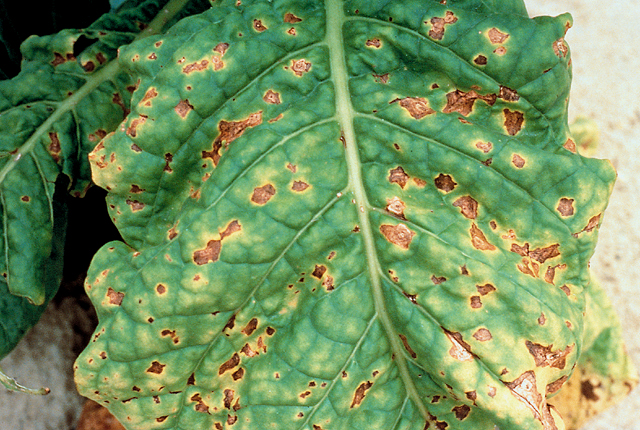
Angular leaf spot | Tobacco
DISEASE: Angular leaf spot
HOST: Tobacco (Nicotiana tabacum)
PATHOGEN: Pseudomonas syringae pv. tabaci
SOURCE: H. Shew
DISEASE: Angular leaf spot
HOST: Tobacco
Severely diseased leaf with extensive yellowing.
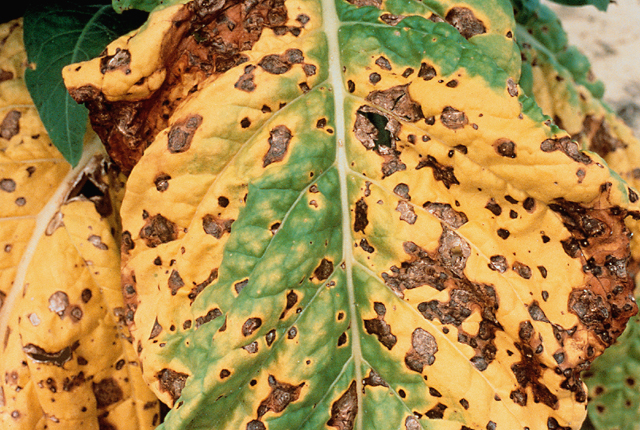
Angular leaf spot | Tobacco
DISEASE: Angular leaf spot
HOST: Tobacco (Nicotiana tabacum)
PATHOGEN: Pseudomonas syringae pv. tabaci
SOURCE: H. Shew
DISEASE: Bacterial blast and black pit
HOST: Citrus (Lemon)
The term "black pit" refers to black lesions on fruit, which may be specks or large, sunken pits as seen here. They also may be light tan, later becoming reddish brown to black.
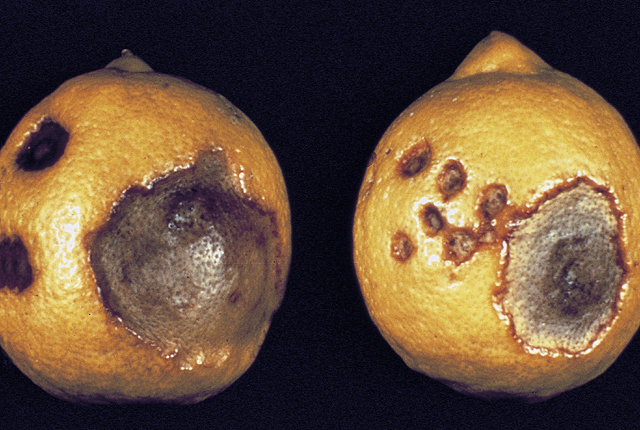
Bacterial blast and black pit | Citrus (Lemon)
DISEASE: Bacterial blast and black pit
HOST: Citrus (Lemon) (Citrus limon)
PATHOGEN: Pseudomonas syringae pv. syringae
SOURCE: J. Menge
DISEASE: Bacterial blight
HOST: Mulberry
Leaf with numerous small, dark brown lesions with chlorotic halos.
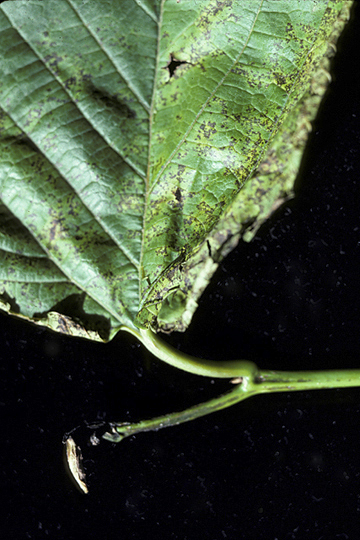
Bacterial blight | Mulberry
DISEASE: Bacterial blight
HOST: Mulberry (Morus alba)
PATHOGEN: Pseudomonas syringae pv. mori
SOURCE: S. Thomson
DISEASE: Bacterial blight
HOST: Mulberry
Foliage with small, dark lesions with large, yellowish halos.
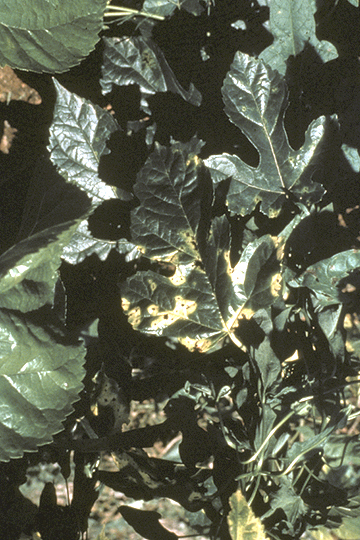
Bacterial blight | Mulberry
DISEASE: Bacterial blight
HOST: Mulberry (Morus sp.)
PATHOGEN: Pseudomonas syringae pv. mori
SOURCE: M. Sato, M. Goto
DISEASE: Bacterial blight
HOST: Mulberry
Blighted foliage with yellowing and curling of leaves.
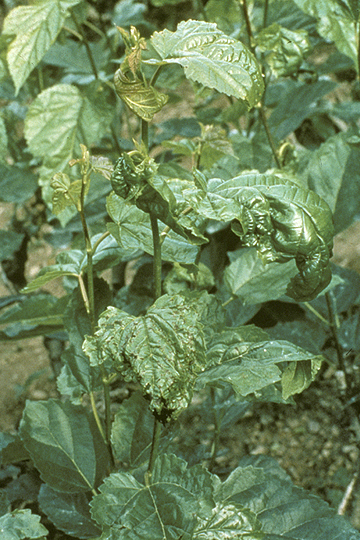
Bacterial blight | Mulberry
DISEASE: Bacterial blight
HOST: Mulberry (Morus sp.)
PATHOGEN: Pseudomonas syringae pv. mori
SOURCE: M. Sato, M. Goto
DISEASE: Bacterial fasciation (Leafy gall)
HOST: Tobacco
Bacterial fasciation of tobacco.
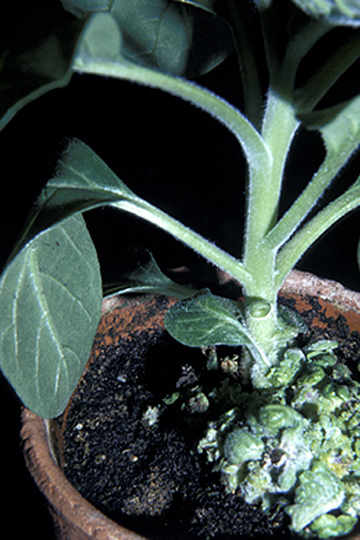
Bacterial fasciation (Leafy gall) | Tobacco
DISEASE: Bacterial fasciation (Leafy gall)
HOST: Tobacco (Nicotiana tabacum)
PATHOGEN: Rhodococcus fascians
SOURCE: R. Raabe


